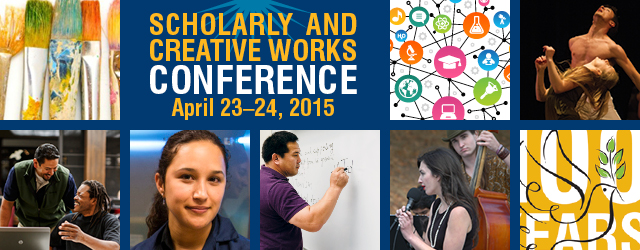
Oral Presentations - Guzman 302
The Key To Collaboration Between Special and General Education Teachers
Location
Guzman 302
Start Date
4-23-2015 6:40 PM
End Date
4-23-2015 6:55 PM
Student Type
Graduate
Faculty Mentor(s)
Madalienne F. Peters, Ed.D.
Presentation Format
Oral Presentation
Abstract/Description
Teachers often do not communicate with one another when working to meet the needs of their students. The purpose of this study is to examine and analyze the need, nature and manner by which general and special education teachers communicate and collaborate to address the educational needs of their students.
A review of the educational literature reveals that a burden is placed on the educational community given the often conflicting statutory obligations to: fully include special needs students in the general classroom, comply with State mandated general education curriculum requirements and implement instructional guidelines required by Individual Educational Plans (IEP) for students with special needs. The literature further confirms that both general and special education teachers have difficulty securing the support they need to help special needs students meet their IEP goals in the context of the curriculum requirements of the general classroom.
The participants in the survey are twenty five (25) teachers from a suburban elementary public school in Northern California. Interviews were also conducted with school administrators, general education and special education teachers from the school.
The research findings indicate that communication between general and special education teachers is the most important aspect of collaboration and the primary focus of communication is the coordination of IEP goals with the curriculum of the general classroom given the statutory obligations to integrate special needs students into the classroom. This information can be used to not only address behavior issues, but can serve as a basis for the informal progress monitoring of IEP goals.
The Key To Collaboration Between Special and General Education Teachers
Guzman 302
Teachers often do not communicate with one another when working to meet the needs of their students. The purpose of this study is to examine and analyze the need, nature and manner by which general and special education teachers communicate and collaborate to address the educational needs of their students.
A review of the educational literature reveals that a burden is placed on the educational community given the often conflicting statutory obligations to: fully include special needs students in the general classroom, comply with State mandated general education curriculum requirements and implement instructional guidelines required by Individual Educational Plans (IEP) for students with special needs. The literature further confirms that both general and special education teachers have difficulty securing the support they need to help special needs students meet their IEP goals in the context of the curriculum requirements of the general classroom.
The participants in the survey are twenty five (25) teachers from a suburban elementary public school in Northern California. Interviews were also conducted with school administrators, general education and special education teachers from the school.
The research findings indicate that communication between general and special education teachers is the most important aspect of collaboration and the primary focus of communication is the coordination of IEP goals with the curriculum of the general classroom given the statutory obligations to integrate special needs students into the classroom. This information can be used to not only address behavior issues, but can serve as a basis for the informal progress monitoring of IEP goals.

